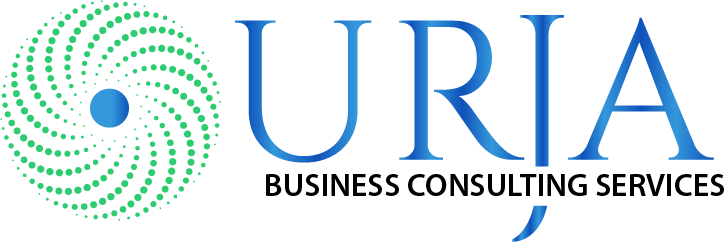ERP Implementation
Transform Your Business with Seamless ERP Implementation
At the core of our ERP deployment strategy is Microsoft’s Success by Design methodology, a structured, insight-driven framework that ensures implementations are aligned with business objectives, delivered on time, and built to scale.
We emphasize on proactive planning, risk management, quality assurance, and stakeholder alignment at every stage of the project lifecycle.
We complement the approach with our own set of value-added servicesthat bring additional depth and customization to the deployment process.
From in-depth business requirement analysis and solution blueprinting to tailored user training, change management, and post-deployment support, we ensure a seamless and efficient transition.
We Align the ERP system with your unique business goals and processes
Streamline implementation through clearly defined phases and milestones
Mitigate risks early through built-in governance and quality checks
Accelerate user adoption through customized onboarding and training
Ensure long-term value with post-implementation optimization and support
“Our goal is not just successful deployment but also to enable you to realize the full strategic and operational value of your ERP investment.
We deliver a deployment experience that is smooth, predictable, and results-focused from start to finish”.
How we work…
Step-1: Discovery Phase:
Understand the Business
Activities:
-
-
Client interviews to identify goals, pain points, and industry challenges.
-
Define KPIs (e.g., cost reduction, efficiency, revenue growth).
-
Outcome:
Business Requirement Document (BRD).
What We Expect From The Client
Activities:
Access to Stakeholders:
- Availability of decision-makers (e.g., CTO, Operations Head) to clarify business goals.
- End-user interviews (e.g., warehouse staff, sales teams) to understand pain points.
Business Documentation:
- Access to existing process maps, organizational charts, and workflow diagrams.
- Past reports/KPIs (e.g., production logs, sales data, customer complaints).
Feedback Required:
Sign-off on the Business Requirements Document (BRD) to confirm alignment.
Step-2 : Process Mapping
Analyze Business Workflows
Activities: Map core processes
- Management: Decision-making hierarchies, reporting structures.
- Production: Manufacturing/operational workflows, bottlenecks.
- Logistics: Supply chain, inventory management, delivery systems.
- Identify inefficiencies using data audits and workflow diagrams.
Outcome:
Process Gap Analysis Report.
What We Expect From Client
Process Mapping & Data Audit
Activities:
Process Ownership:
-
- Assign a client-side process owner to validate workflows (management, production, logistics).
Data Access:
-
Provide sample datasets (e.g., CRM exports, inventory logs, IoT sensor data).
-
Share API/documentation for existing systems (e.g., ERP, Microsoft BI dashboards)
Feedback required:
Approval of the Process Gap Analysis Report to prioritize AI use cases.
Step-3 : Data & Technology Review
AI Opportunity Assessment
Activities: Map core processes
-
Audit existing IT infrastructure (e.g., legacy systems, BI tools like Microsoft Power BI).
-
Identify datasets for AI integration (e.g., CRM, ERP, IoT sensors).
-
Prioritize AI use cases (e.g., predictive maintenance, chatbots, demand forecasting).
Outcome:
AI Feasibility Report with ROI Projections.
What We Expect From The Client
Activities:
Technical Collaboration:
-
-
-
IT team input on integration requirements (e.g., compatibility with legacy systems).
-
Security/IT policies (e.g., data privacy rules, cloud vs. on-prem hosting).
-
-
Feedback Required:
Approval of the Technical Architecture Blueprint (tools, timelines, costs).
Step-4 : Solution Design
Architecting the
AI-Driven System
Activities: Design solutions for prioritized areas
-
-
-
Management: AI-powered dashboards for real-time decision-making.
-
Production: Computer vision for quality control, ML for predictive maintenance.
-
Logistics: AI-optimized routing, inventory forecasting.
Integrate with Microsoft BI for advanced analytics.
-
-
Outcome:
Technical Architecture Blueprint & Project Roadmap
What We Expect From The Client
Activities:
User Testing:
-
-
-
-
- End-users to participate in UAT (User Acceptance Testing) for AI models, apps, or BI dashboards.
- Feedback on UI/UX, functionality, and performance.
Data Provisioning:
-
Continuous access to updated datasets for refining AI models.
-
-
-
Feedback Required:
Sign-off on test results and bug-fix prioritization.
Step-5 : Development & Implementation
Build & Deploy
Activities:
- Develop AI models (e.g., NLP chatbots, predictive algorithms).
- Build web/mobile apps with embedded AI features.
- Integrate with existing systems (e.g., Microsoft BI, ERP).
- Pilot testing and feedback loops.
-
-
Outcome:
Deployed AI Solution with Training Modules.
What We Expect From The Client
Activities:
Change Management:
Is about preparing people’s minds and skills in the company and helping them to adapt to the new AI tools or systems being introduced. Explain why the new system matters and also Organize training sessions to teach employees how to use it. Best is to choose a few tech-savvy staff to learn the system first and help others.
Infrastructure Readiness
Set up servers, buy licenses, or create cloud accounts (e.g., Microsoft Azure) if needed.Ensure all employees have access to the new AI-powered app before it launches.
Feedback Required:
Post-deployment survey to identify adoption challenges
Step-6 : Monitoring & Optimization
Post-Implementation Support
Activities:
-
Track KPIs (e.g., efficiency gains, cost savings).
-
Refine AI models with new data.
-
Scale solutions to other business units.
-
-
Outcome:
Continuous Improvement Cycle.
Post-Implementation Support needed from client
Activities:
Performance Monitoring:
Share operational data (e.g., post-AI efficiency metrics, user feedback).
Iterative Feedback:
Monthly/quarterly reviews to refine AI models or scale solutions.
Feedback Required:
ROI validation
